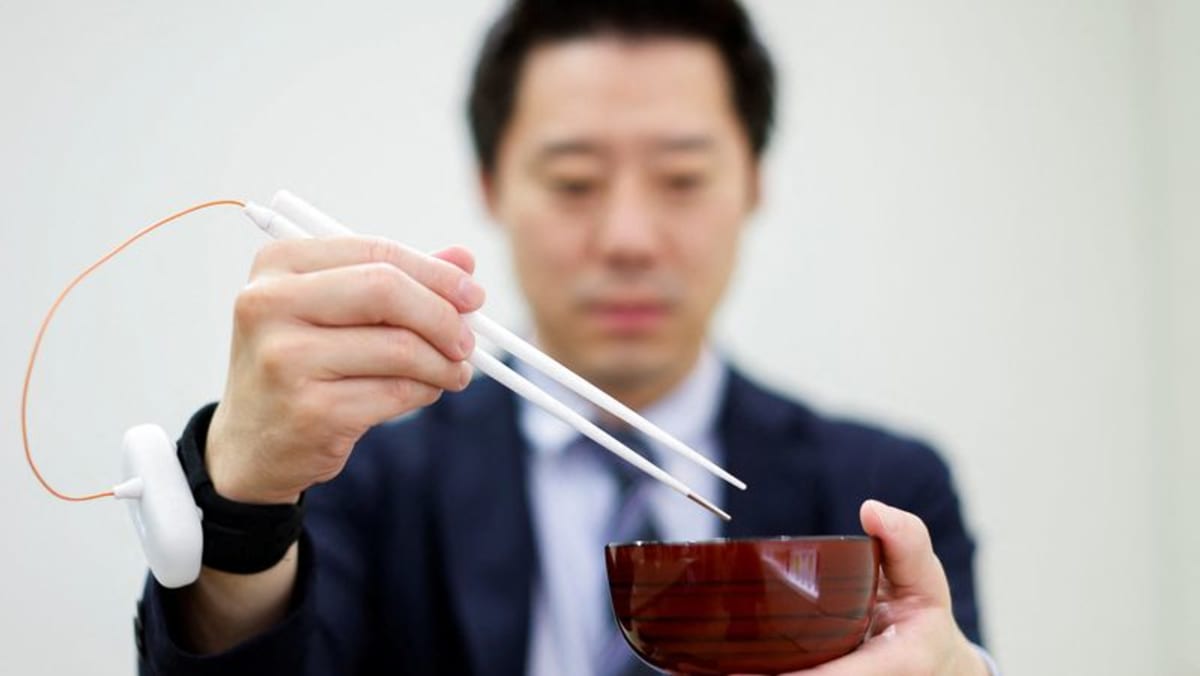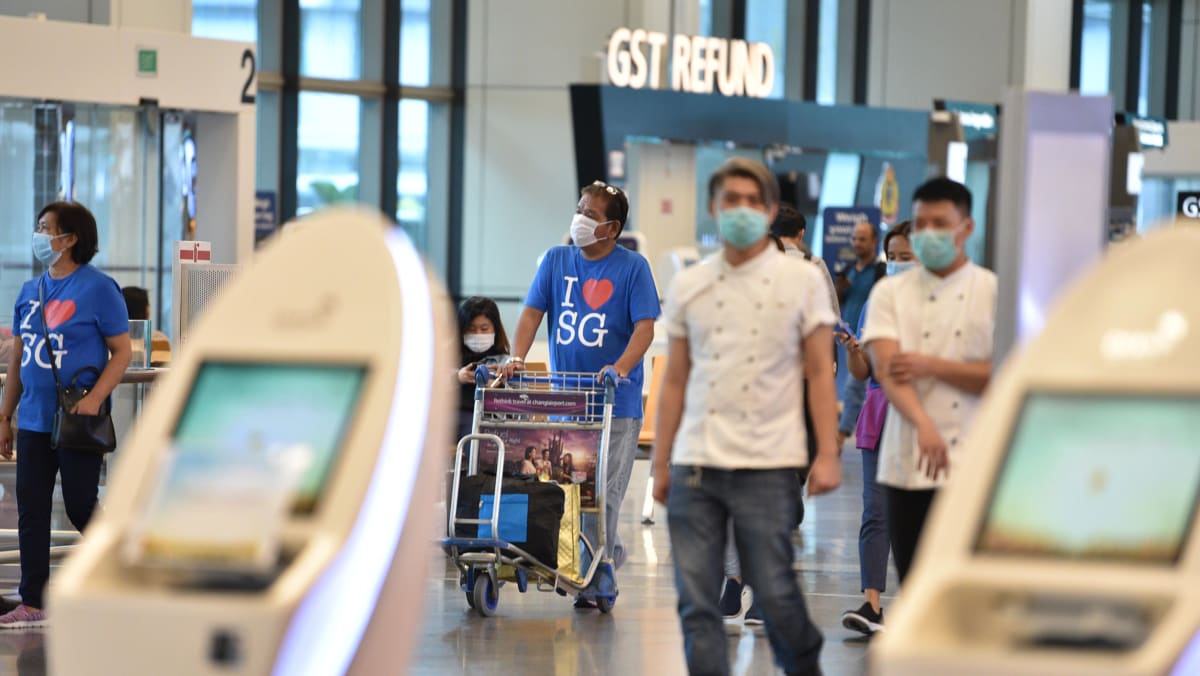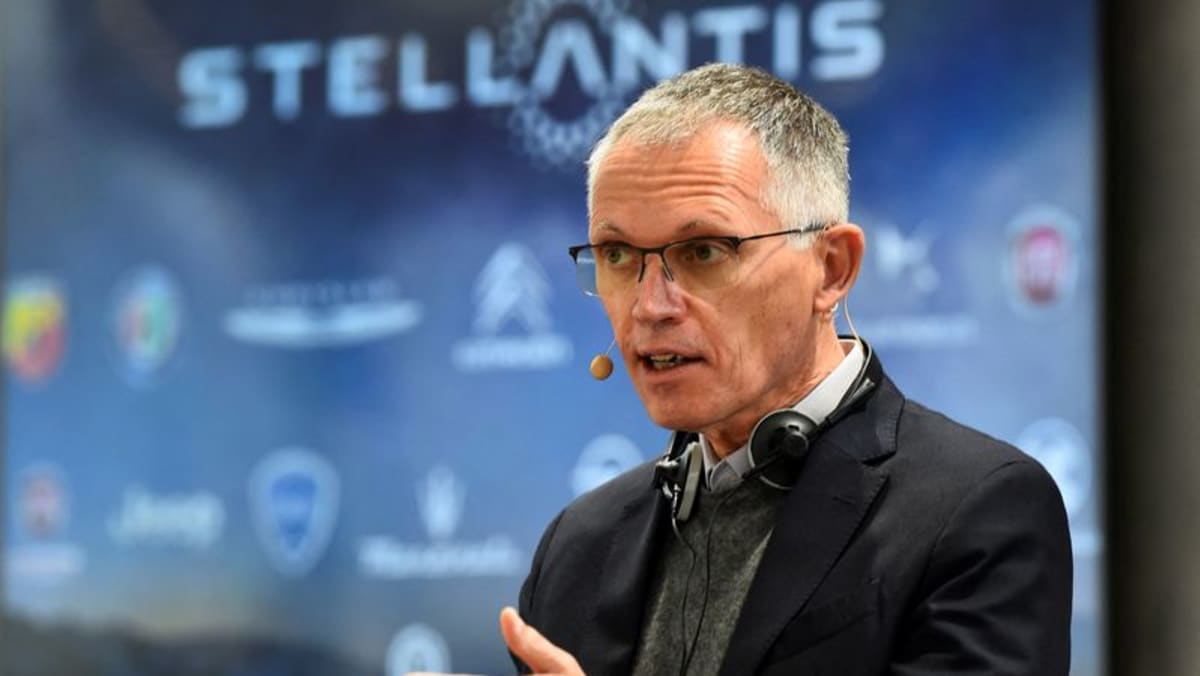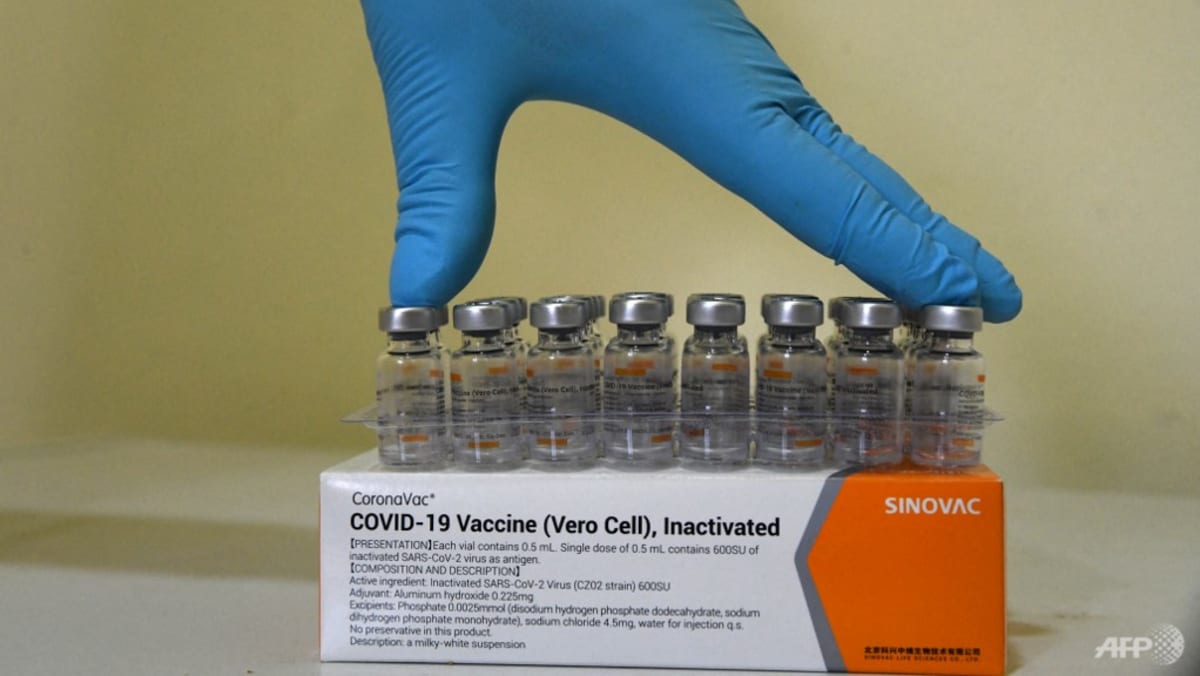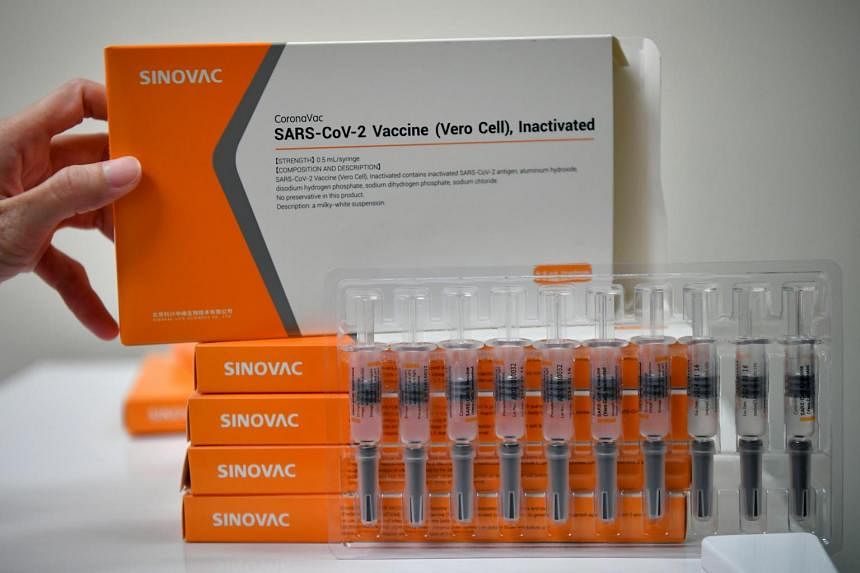The Shenzhou-13 crew have safely returned to Earth after their epic six-month orbital trip, which nearly doubled the previous record of China's longest single-flight space mission of 92 days set by the Shenzhou-12, some eight hours after the manned spacecraft's detachment from the Tianhe core module.
The Shenzhou-13 return capsule conduced successful touchdown at 9:56 am Saturday in the Dongfeng landing site in Gobi Desert, North China's Inner Mongolia Autonomous Region. Medical team confirmed that the crew of three taikonauts are in good health, marking the full success of the Shenzhou-13 manned spaceflight mission, Global Times learned from the China Manned Space Agency (CMSA) on Saturday.
The ground controlling team ordered the return by 9:06 am, and the return capsule separated with the Shenzhou-13 with success. After that, at 9:30 am, the return capsule detached from the propelling part, according to the CMSA.
Ground rescue and recovery team arrived at the landing point immediately and medics opened the hatch and confirmed the crew are in good health condition.
All three taikonauts exit return capsule by 11:05 am and they are adapting to the gravity, CMSA updated.
The Shenzhou-13 crew exited the return capsule one hour and 10 minutes after their touchdown, faster than that for Shenzhou-12 crew which took one hour and 40 minutes.
Shenzhou-13 mission commander Zhai Zhigang got out of return capsule first, reporting "feeling good". Following him, "Star-picking mom is home," said Shenzhou-13 crew member Wang Yaping, the first spacewalking Chinese woman, waving to her daughter with a big smile after exiting return capsule. And Ye Guangfu, the youngest member of the three soon joined them with good spirits.
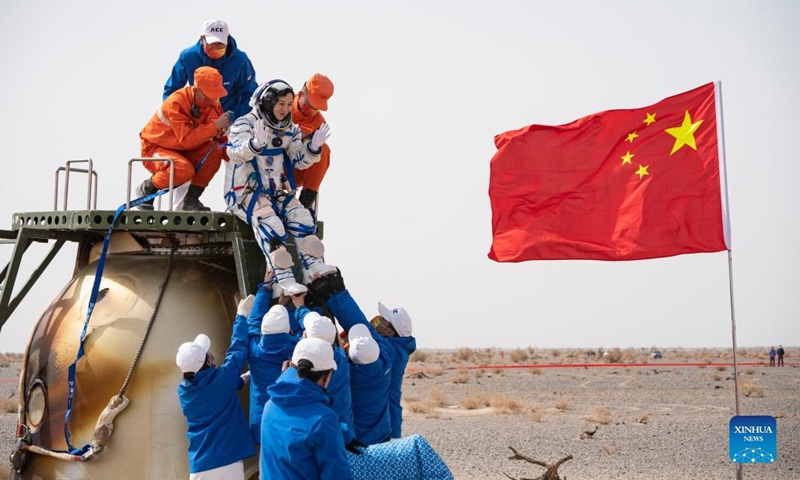
Astronaut Wang Yaping is out of the return capsule of the Shenzhou-13 spaceship at the Dongfeng landing site in north China's Inner Mongolia Autonomous Region on April 16, 2022.Photo:Xinhua
Sichuan sausages, yogurt, eggs …the crew will have a great variety of food options for their first meal back on Earth with some 20 dishes, CCTV reported.
The crew arrived in Beijing in the afternoon, followed by a brief welcome ceremony at the airport. The three taikonauts will undergo three to four weeks of routine quarantine, rest and rehabilitation. They are expected to resume regular training after about six months, according to CCTV report.
Apart from the long-term stay in space, the mission has set many records and firsts in the country's manned space history.
The Shenzhou spacecraft developer, China Academy of Spacecraft Technology (CAST), disclosed in a statement sent to the Global Times that the Shenzhou-13 mission also explored emergency mission mechanisms for the first time, with the Shenzhou-14 manned spacecraft and Long March-2F Y14 rocket in standby position right after the launch of the Shenzhou-13 and Long March-2F Y13. This enabled a potential space rescue of the Shenzhou-13 taikonauts in case of any malfunction preventing the spacecraft from returning to Earth.
Compared to the return trip of the Shenzhou-12 mission which took approximately 28 hours, the Shenzhou-13 carried out a rapid return maneuver which took just eight hours.
The CAST explained that the Shenzhou-13 orbit plan was streamlined to five orbits compared to the 18 of the Shenzhou-12 mission, and it was designed to further enhance return efficiency, shorten the ground monitoring and make it more comfortable for the returning astronauts.
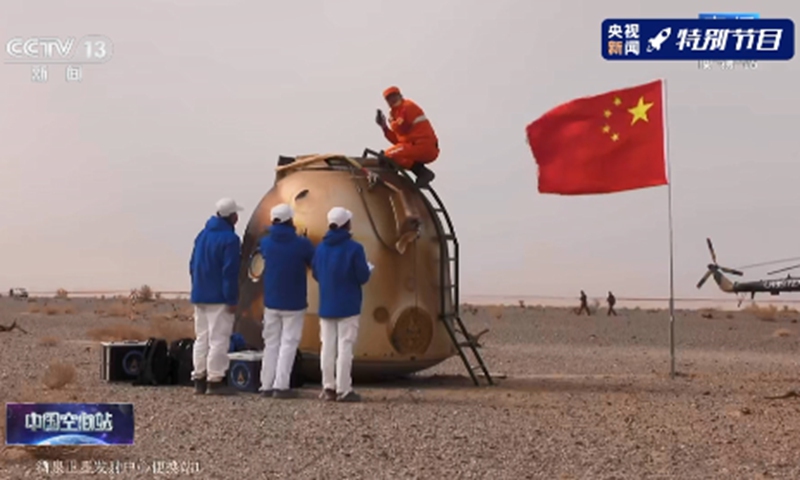
Photo: Recovery and rescue team arrives at the landing point of Shenzhou-13 return capsule right after its touchdown.
The 18 laps for Shenzhou-12 included some fly-around experiment tasks, and the traditional plan was 11 and a half laps, deputy chief designer Shao Limin told the Global Times.
The Shenzhou-13 crew's unprecedented six-month stay in orbit was taken into consideration and the plan was to make their journey home more comfortable, Shao noted.
Wang Ya'nan, chief editor of Beijing-based Aerospace Knowledge magazine, told the Global Times that this approach required more precise control of the spacecraft and more accurate orbital calculations, so that the spacecraft, once separated, could quickly target the landing area, calculate the return path, and adjust its altitude.
"Having the ability to adopt such a fast return method indicates that China's return technology for manned missions is very mature and reliable," Wang added.
To ensure their safe and smooth return, the taikonauts have been taking physical exercises to train their muscles. Meanwhile, the ground support team has evaluated their physical and psychological condition, and made targeted adjustments.
"The reason why the three crew members' physical and psychological condition is better than expected is that we have arranged their lives and work in space carefully, in an orderly and rational fashion. If the arrangements were not carefully designed, their mental status could have easily gone wrong," Wang explained.
The taikonauts on the Shenzhou-13 executed two successful spacewalks with Wang Yaping, who became the first Chinese woman in history to perform this maneuver. Wang is also the record-holder for the longest stay in orbit by any Chinese astronaut.
The crew delivered two Tiangong Classroom science lectures for students on Earth, connecting with young people in Beijing, Hong Kong, Macao and the Xinjiang and Xizang autonomous regions.
They have also played a significant part in many historic moments in China in the past six months, sending their blessings and congratulations during the Chinese New Year and joining the audience of the Beijing 2022 Winter Olympic Games from space.
With the advance of space communication technologies, the crew members were able to entertain themselves on the internet, talking to their families and friends frequently, and having space-Earth interactions on a regular basis. The two space lectures also helped a lot in boosting their mental status.
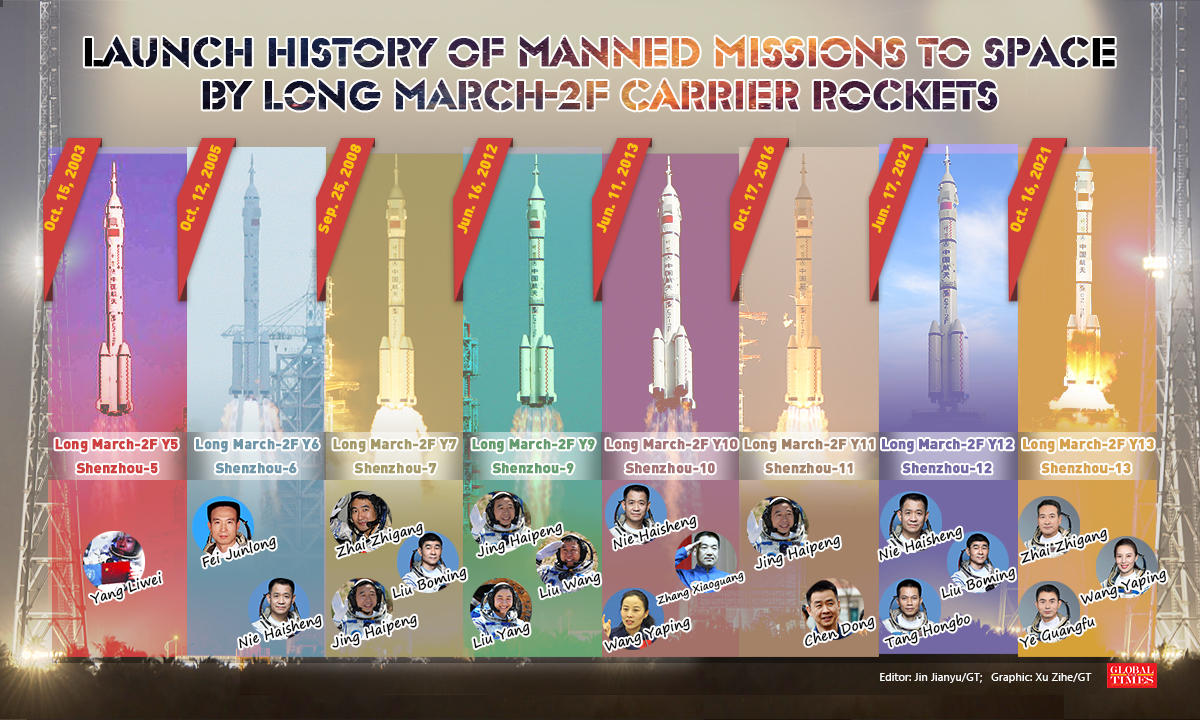
Launch history of manned missions to space by Long March-2F carrier rockets
Pang Zhihao, a senior space expert, told the Global Times on Saturday that normally it would take around three months for astronauts returning from space to recover their strength. However, it could take a bit longer for the Shenzhou-13 crew, as they stayed in space for such a long period, Pang said.
After the successful Shenzhou-13 mission, China Space Station will enter an in-orbit construction phase with two lab modules to be added to the core module, per program insiders.
Bai Linhou, deputy chief designer of China's space station, said in an interview that two experimental modules are expected to be launched in the second half of this year. The verification and assembly work of the modules is progressing smoothly.
Both lab modules have a length of over 17 meters and a diameter of over 4 meters.
The Wentian module is positioned to carry out space science experiments inside and outside the cabin. It has an airlock through which taikonauts can exit, and a small robotic arm which can be used alone or combined with the large mechanical arm of the space station.
It can also serve as a backup to the core cabin, Bai said. If malfunction occurs in the core cabin, the Wentian module can replace it immediately, improving the reliability of the entire station's operation.
Adblock test (Why?)
https://news.google.com/__i/rss/rd/articles/CBMiNGh0dHBzOi8vd3d3Lmdsb2JhbHRpbWVzLmNuL3BhZ2UvMjAyMjA0LzEyNTk0NTMuc2h0bWzSAQA?oc=5
2022-04-16 01:57:00Z
1315169705
